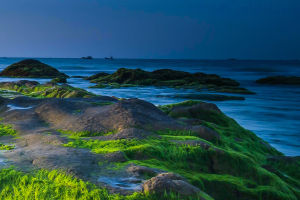The Red Deer (Cervus elaphus) is a large species of deer native to Europe, parts of Asia, and North America.
Known for its impressive antlers and majestic presence, the Red Deer is one of the largest and most recognizable deer species in the world.
Interesting Characteristics of Red Deer:
1.Antler Growth and Use: Male Red Deer, or buck, grow antlers that can span up to 1 meter (3.3 feet) in width. These antlers are shed and regrown annually. The antlers are used in mating displays, known as rutting, where bucks compete for dominance and mates. The size and condition of the antlers can indicate the buck's health and genetic quality.
2.Complex Vocalizations: During the rutting season, Red Deer are known for their distinctive and powerful calls, called "roars." These vocalizations can carry over long distances and are used to attract females and challenge rival males. The roar of a buck can be heard from several kilometers away.
3.Seasonal Fur Changes: Red Deer exhibit seasonal changes in their fur. In the summer, their coats are reddish-brown, which helps them blend into the forest environment. In winter, their fur becomes thicker and more grayish, providing better insulation against the cold.
4.Mating Behavior: The rutting season, typically occurring in the fall, involves dramatic and noisy displays of dominance among males. Bucks will engage in "roaring matches" and antler clashes to establish territory and attract females. This period is crucial for their reproductive success.
5.Social Structure: Red Deer live in social groups that vary in structure. Females and their young often form herds, while males may form smaller bachelor groups outside the breeding season. During the rut, males become more solitary and aggressive as they compete for mating opportunities.
Things you need to know about RED DEER
Video by A Shot Of Wildlife
6.Diverse Habitat Adaptability: Red Deer are highly adaptable and can live in a variety of habitats, from dense forests to open moorlands. They have even been introduced to areas outside their native range, such as parts of New Zealand and Australia, where they have thrived and become significant in the local ecosystems.
7.Migrations and Movements: In some regions, Red Deer undertake seasonal migrations. In areas with harsh winters, they may move to lower elevations where food is more accessible. These migrations can cover significant distances and are influenced by environmental conditions.
8.Dietary Preferences: Red Deer are primarily herbivores and have a varied diet that includes grasses, leaves, and bark. During winter, when food is scarcer, they rely more on woody plants and can browse on shrubs and tree bark to survive.
These fascinating traits contribute to the Red Deer’s status as a remarkable and adaptable species within the deer family.
Lykkers, we’d love to hear what you think about the incredible traits and behaviors of the Red Deer. Did any of these fascinating facts surprise you? Share your thoughts, experiences, or any additional insights you might have in the comments below!
Your feedback and stories enrich our understanding and appreciation of these magnificent animals.


